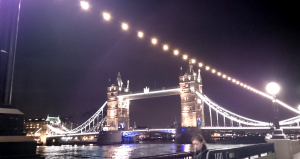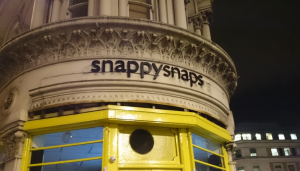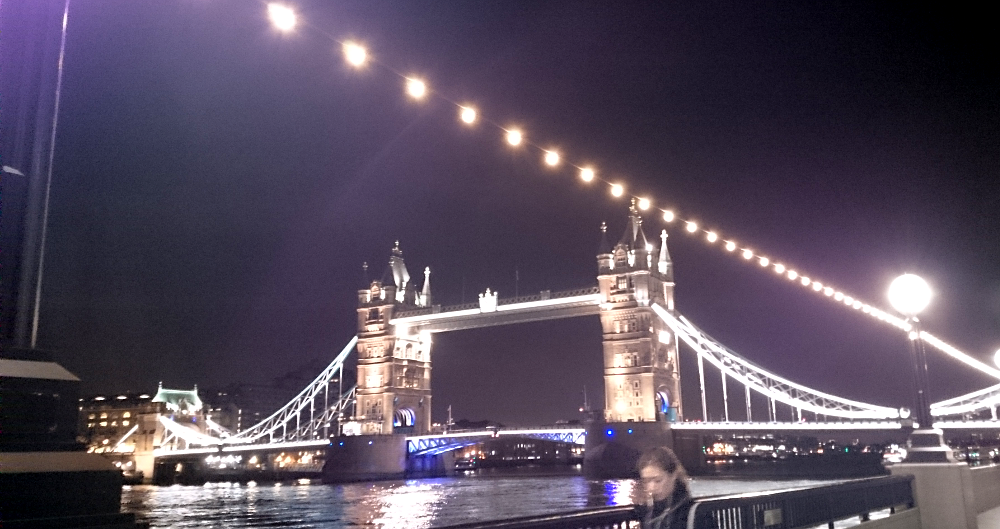Two weeks ago was the GNOME Software hackfest in London, and I’ve been there! And I just now found the time to blog about it, but better do it late than never 😉 .
Arriving in London and finding the Red Hat offices
After being stuck in trains for the weekend, but fortunately arriving at the airport in time, I finally made it to London with quite some delay due to the slow bus transfer from Stansted Airport. After finding the hotel, the next issue was to get food and a place which accepted my credit card, which was surprisingly hard – in defence of London I must say though, that it was a Sunday, 7 p.m. and my card is somewhat special (in Canada, it managed to crash some card readers, so they needed a hard-reset). While searching for food, I also found the Red Hat offices where the hackfest was starting the next day by accident. My hotel, the office and the tower bridge were really close, which was awesome! I have been to London in 2008 the last time, and only for a day, so being that close to the city center was great. The hackfest didn’t leave any time to visit the city much, but by being close to the center, one could hardly avoid the “London experience” 😉 .
Cool people working on great stuff
 That’s basically the summary for the hackfest 😉 . It was awesome to meet with Richard Hughes again, since we haven’t seen each other in person since 2011, but work on lots of stuff together. This was especially important, since we managed to solve quite some disagreements we had over stuff – Richard even almost managed to make me give in to adding <kudos/> to the AppStream spec, something which I was pretty against supporting (it didn’t make it yet, but I am no longer against the idea of having that – the remaining issues are solvable).
That’s basically the summary for the hackfest 😉 . It was awesome to meet with Richard Hughes again, since we haven’t seen each other in person since 2011, but work on lots of stuff together. This was especially important, since we managed to solve quite some disagreements we had over stuff – Richard even almost managed to make me give in to adding <kudos/> to the AppStream spec, something which I was pretty against supporting (it didn’t make it yet, but I am no longer against the idea of having that – the remaining issues are solvable).
Meeting Iain Lane again (after FOSDEM) was also very nice, and also seeing other people I’ve only worked with over IRC or bug reports (e.g. William, Kalev, …) was great. Also lots of “new” people were there, like guys from Endless, who build their low-budget computer for developing/emerging countries on top of GNOME and Linux technologies. It’s pretty cool stuff they do, you should check out their website! (they also build their distribution on top of Debian, which is even more awesome, and something I didn’t know before (because many Endless people I met before were associated with GNOME or Fedora, I kind of implicitly assumed the system was based on Fedora 😛 )).
The incarnation of GNOME Software used by endless looks pretty different from what the normal GNOME user sees, since it’s adjusted for a different audience and input method. But it looks great, and is a good example for how versatile GS already is! And for upstream GNOME, we’ve seen some pretty great mockups done by Endless too – I hope those will make it into production somehow.

XdgApp and sandboxing of apps was also a big topic, aside from Ubuntu and Endless integration. Fortunately, Alexander Larsson was also there to answer all the sandboxing and XdgApp-questions.
I used the time to follow up on a conversation with Alexander we started at FOSDEM this year, about the Limba vs. XdgApp bundling issue. While we are in-line on the sandboxing approach, the way how software is distributed is implemented differently in Limba and XdgApp, and it is bad to have too many bundling systems around (doesn’t make for a good story where we can just tell developers “ship as this bundling format, and it will be supported everywhere”). Talking with Alex about this was very nice, and I think there is a way out of the too-many-solutions dilemma, at least for Limba and XdgApp – I will blog about that separately soon.
On the Ubuntu side, a lot of bugs and issues were squashed and changes upstreamed to GNOME, and people were generally doing their best to reduce Richard’s bus-factor on the project a little 😉 .
I mainly worked on AppStream issues, finishing up the last pieces of appstream-generator and running it against some sample package sets (and later that week against the whole Debian archive). I also started to implement support for showing AppStream issues in the Debian PTS (this work is not finished yet). I also managed to solve a few bugs in the old DEP-11 generator and prepare another release for Ubuntu.
We also enjoyed some good Japanese food, and some incredibly great, but also suddenly very expensive Indian food (but that’s a different story 😉 ).
The most important thing for me though was to get together with people actually using AppStream metadata in software centers and also more specialized places. This yielded some useful findings, e.g. that localized screenshots are not something weird, but actually a wanted feature of Endless for their curated AppStore. So localized screenshots will be part of the next AppStream spec. Also, there seems to be a general need to ship curation information for software centers somehow (which apps are featured? how are they styled? added special banners for some featured apps, “app of the day” features, etc.). This problem hasn’t been solved, since it’s highly implementation-specific, and AppStream should be distro-agnostic. But it is something we might be able to address in a generic way sooner or later (I need to talk to people at KDE and Elementary about it).
In summary…
It was a great event! Going to conferences and hackfests always makes me feel like it moves projects leaps ahead, even if you do little coding. Sorting out issues together with people you see in person (rather than communicating with them via text messages or video chat), is IMHO always the most productive way to move forward (yeah, unless you do this every week, but I think you get my point 😀 ).
For me, being the only (and youngest ^^) developer at the hackfest who was not employed by any company in the FLOSS business, the hackfest was also motivating to continue to invest spare time into working on these projects.
So, the only thing left to do is a huge shout out of “THANK YOU” to the Ubuntu Community Fund – and therefore the Ubuntu community – for sponsoring me! You rock! Also huge thanks to Canonical for organizing the sponsoring really quickly, so I didn’t get into trouble with paying my flights.

To worried KDE people: No, I didn’t leave the blue side – I just generally work on cross-desktop stuff, and would like all desktops to work as well as possible 😉

One thought on “A GNOME Software Hackfest report”